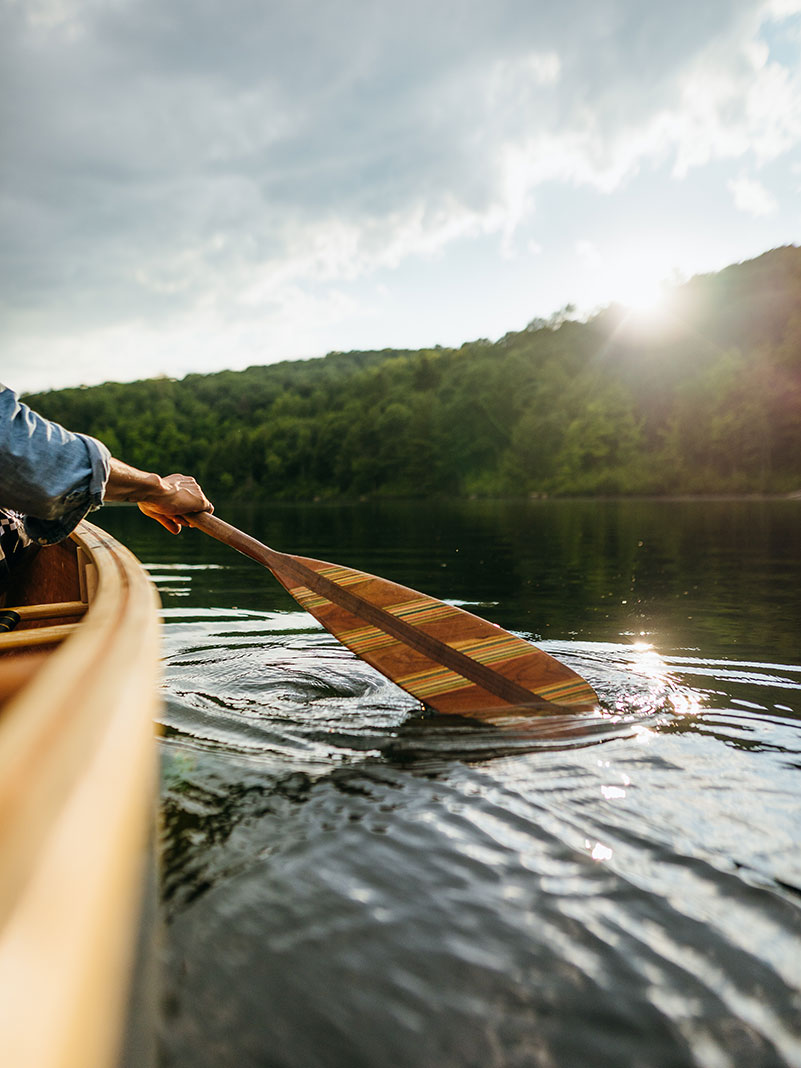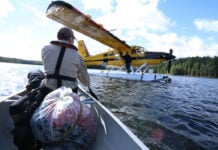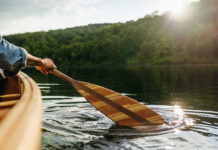Recently, a newbie canoeist asked a simple question on a social media page dedicated to backcountry travel. “Do I need to bring a spare paddle?” At least, I thought it was a simple question. “It’s the law to equip your vessel with a spare manual propelling device,” I replied. Whomp whomp. I was wrong. My error created a stir.
Contentious backcountry spare paddle guideline divides canoeist community
As it turns out, a majority of canoeists commented they always carry a spare paddle. Whether it was the law or not, it’s just good sense, they said. A few renegades replied they never have and never will. One proclaimed he was a certified canoe instructor—therefore, I guess, he had to be right.

The anti-spare paddle defenses were varied. Some stated you must be a poor paddler to break the only paddle you had—or just unlucky, I thought. Others claimed a spare is smart when trekking in the far north but not needed on wilderness trips closer to home. I tried to imagine anyone using this same argument to rationalize leaving behind a spare tire on a drive of only a few hours.
Many paddlers seemed to have the misguided notion they could easily fix a broken paddle with a couple of inches of duct tape or make a paddle from forest materials. So, I know those commenters haven’t tried. One guy even bragged about creating a makeshift paddle from a plastic kitchen cutting board and a marshmallow stick. Just imagine how this triumph performed.
A spare paddle isn’t just for emergencies
Bringing a spare paddle isn’t just a safety measure; it’s practical. I might opt for a featherweight blade for lakes, but I pull out my burlier spare for swifts and navigating rocky shallows. And for folks who only bring a spare on far north trips—I’ve also heard of paddles swiped totally by accident on busy portages. I’ll tell you this, too: every paddler I know who has broken or lost a paddle on a canoe trip opted to bring a spare on future trips.
The bottom line is that even if you’re Red Green, fashioning a floppy repair is a hassle, and it’s never as good.
Why did I think bringing a spare paddle was a regulation in the first place? The seasoned canoeists I learned from always packed a PFD, whistle, throw line, bailer and waterproof flashlight. Back then, law enforcement didn’t fine you if those safety items weren’t in the canoe the way they do now, but canoeists brought ‘em anyway because it’s common sense.
And those canoeists always brought a spare paddle too.
It’s not illegal to go without, but why?
Whether you place a plastic whitewater blade between your packs, tuck an ottertail behind your seat, or strap a carbon fiber bent shaft under the gunwales with a bungee, a spare paddle is less than a pound and guarantees you can continue on your trip if you snap a shaft, split a blade or twist off a t-grip.
Nope, it’s not illegal to paddle without a spare. But you know what they say. You never want to be up the creek without a…
This article was first published in the Early Summer 2022 issue of Paddling Magazine. Subscribe to Paddling Magazine’s print and digital editions, or browse the archives.
Two paddles is too much of a good thing. Or is it? You have 376 miles to make your argument. Time starts…now. | Feature photo: Taylor Burk









One spare paddle? I always carry at least two. My light weight bent Grey Owl. Ottertail Cherry and a whitewater paddle. Sometimes on a long or varied – lake, river etc. paddle, You need a change of paddle, to meet the circumstance or just for a change of pace. When the spare paddle is strapped to canoe, if you tip, there is always at least one paddle available, so you will never have to paddle up a creek without one.
Resounding yes …I ve broken plenty of whitewater and flatwater paddles…and found many lost ones on trips in Eddie’s and left on portages.
Always carry a spare..usually one you can use for the shallow water dirty work to save your cherry blade for cruisin
I fly fish from a canoe and have dropped my paddle in the water several times. Current, wind and so-on make it difficult to recover. Always take a spare.
You’re already starting with a paddle with 1/2 of it missing. You better carry a spare.
And its usually the wrong shape, i.e, unlike a Greenland paddle
You have that backwards, friend. Those who need a double bladed paddle are starting with 1/2 their skill missing.
I’ve broken paddles when I used to rent all my gear. I broke one such wooden paddle just digging into a wave. I’ve always brought a spare . Besides it makes a great filleting board.
I own 85 nice paddles my biggest problem is deciding witch one gets to go along just for the ride.I always have a spare.
Spare paddle? Of course. First, to that “certified canoe instructor,” remind me to never take a course from that blowhard. Anyone who says there’s ONE way to do anything when it comes to paddling (other than leaving the campsite better than you found it) cannot be a good teacher. But I digress. Spare paddle? In short, a pro move. Let me count the ways: A different paddle gives you posture breaks (I’ll swap out back and forth during a race.) Yes, a paddle can break. In tricky whitewater it can catch between two rocks and your speed could cause you to lose it, so grab your spare and your buddy trailing you will pick up your first one. Last, among family you can’t have favorites, so bring ’em both. Fun article.
Anyone who believes there is only one way to do anything is not a good instructor. There are many varied reasons for losing a paddle, it does not make you a bad kayaker. I am just at the start of my journey and know I need a better paddle, as when I can up grade the one that came with the kayak will become a spare. Luckily I always have a paddle partner who could help in an emergency for now.
I only have 8 paddles but they are slightly different.
As I’m an instructor of some age I wouldn’t go on the water without 2 paddles.
a) if I’m tripping I like to have a long blade and a short blade paddle for obvious reasons.
b) another other time I feel that I should be demonstrating the best procedures I can. Hence cycling I always wearing a helmet although by law I don’t have to but I do because it make sense but also it helps encourage others that it the right thing to do.
I’m just a bit concerned that an instructor would say he would never carry a spare paddle and wonder about his paddling education. Never is a strong word and I hope I’m not in a group paddle with that person.
Yes! I have broken lots of paddles, and not the cheap ones. Sometimes you get unlucky and catch something on the bottom of a river or it gets away from you in a rapid.
I broke one on Lake Superior, several in Algonquin, and a couple in the NWT, but for some strange reason have never broken one close to home.
You do anything long enough and things will go wrong. Sometimes it’s just fatigue from years of paddling. It might be the law to carry a spare, but it’s also common sense.
BTW, I don’t plan on getting a flat in my car, but I have a spare tire and a pump.
Most sea kayakers carry a spare paddle, the question not being whether to or not, but should the “spare” be a cheapie, emergency paddle or an appropriate quality paddle equal to the one(s) you normally paddle. There are kayakers in both of those camps. Seems experience competes with ignorance and ego when it comes to deciding the spare canoe paddle question.
Usually I hate answering a question with a question, but there’s never a firm rule, so…. why not carry an extra or a spare? Who knows, Perhaps the professional canoe instructor might lose one and I can give him my spare
Do people who argue against bringing a spare also rail against seat belts too?
Some people’s thinking is incomprehensible.